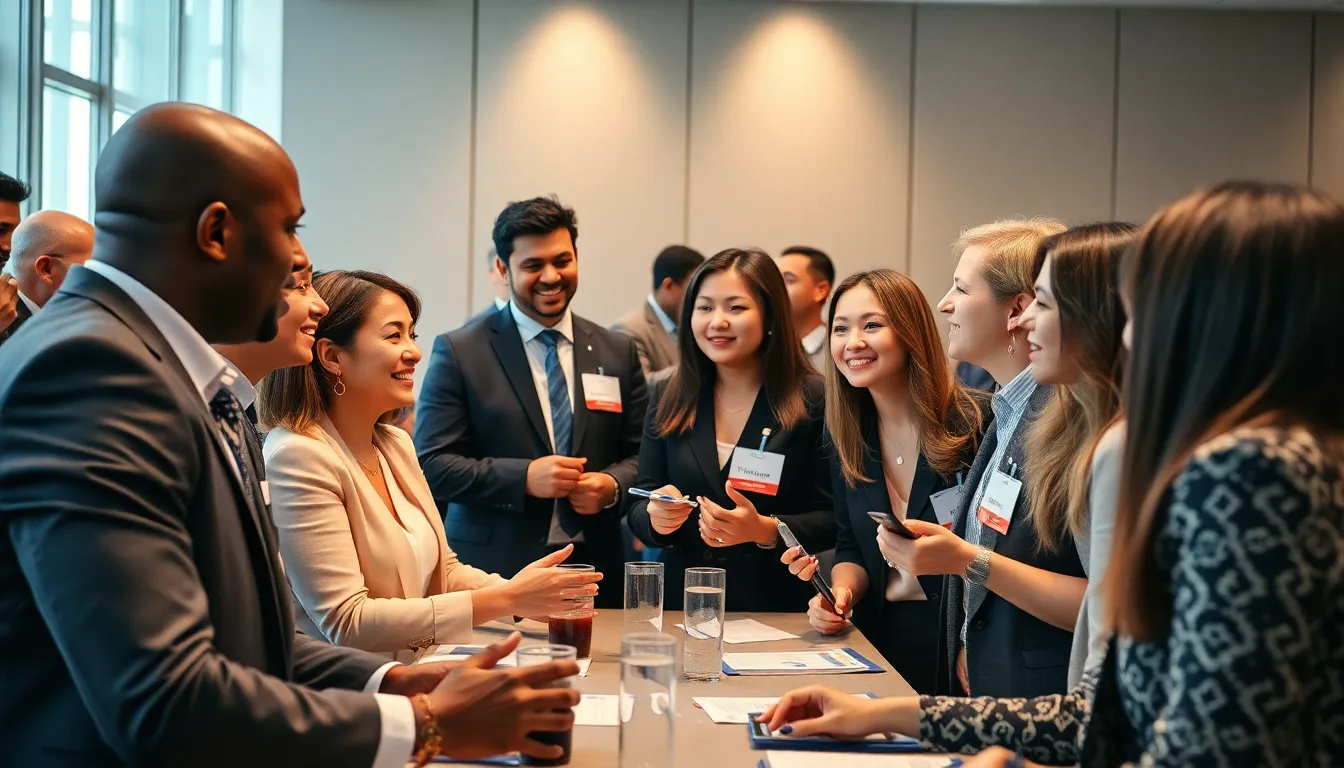In a world overflowing with information, finding clarity can feel like searching for a needle in a haystack. Enter affinity diagramming, the superhero of organization that swoops in to save the day. But what if the process of creating these diagrams could be as easy as sending a text? That’s where ChatGPT comes in. This AI powerhouse can turn chaos into coherence faster than you can say “brainstorming session.”
Table of Contents
ToggleUnderstanding Affinity Diagramming
Affinity diagramming serves as an effective method for organizing ideas and data. This technique allows users to group related information into categories, enhancing clarity and understanding.
What Is Affinity Diagramming?
Affinity diagramming involves the synthesis of large amounts of data through categorization. Teams can physically or digitally cluster similar concepts together, which helps reveal patterns and relationships. By organizing thoughts, participants gain insights that might otherwise remain hidden. This method is commonly used during brainstorming sessions, design thinking workshops, and project planning, serving as a bridge between diverging thoughts and cohesive strategies.
Benefits of Using Affinity Diagramming
Implementing affinity diagramming offers various advantages. It enhances collaboration by encouraging team members to share their perspectives in an inclusive environment. This process fosters creativity as individuals can express their thoughts freely without the fear of judgment. Additionally, it simplifies complexity by breaking down extensive information into manageable segments. Teams can quickly visualize connections among ideas, which leads to more informed decision-making. Ultimately, affinity diagramming streamlines the ideation process and drives effective solutions.
How to Use ChatGPT for Affinity Diagramming

Utilizing ChatGPT for affinity diagramming streamlines the organization of thoughts and ideas. This AI tool assists users in navigating complex data effortlessly.
Setting Up ChatGPT for Your Needs
First, define the purpose of your affinity diagram. It’s essential to clarify what you aim to achieve with your diagram. Next, input specific prompts into ChatGPT that align with your objectives. A clear request, such as “help me categorize these ideas,” directs ChatGPT effectively. Additionally, consider the format of the output you prefer, whether lists or structured paragraphs. Tailor the interaction to receive the most relevant and actionable insights.
Creating Topics and Themes with ChatGPT
Begin the process by brainstorming a list of initial ideas. Input this list to ChatGPT and request possible themes or categories. Leverage the AI’s ability to recognize patterns in your data. For instance, ask, “What main topics emerge from these ideas?” After receiving suggestions, review and refine the categories based on your context. Assess if each theme effectively represents the ideas you wish to group. This method allows for a clearer understanding of relationships among elements, guiding your affinity diagram’s structure.
Practical Tips for Effective Use
Utilizing ChatGPT for affinity diagramming enhances the organization of ideas. Implementing straightforward strategies ensures effectiveness in this process.
Crafting Clear Prompts
Formulating precise prompts aids in generating relevant responses from ChatGPT. Focus on specific objectives when defining a prompt. For instance, users might ask, “What categories can be used for organizing feedback on our latest product?” This clarity encourages targeted answers. Including context improves the AI’s understanding, enabling it to produce more useful suggestions. Short, directive prompts work best, allowing ChatGPT to analyze and respond efficiently. Testing different wording tweaks often yields varied insights, enriching the affinity diagramming process.
Iterating on Responses
Revising and refining responses from ChatGPT maximizes the value of its suggestions. Start by reviewing the initial output for clarity and relevance. Users can modify prompts for deeper exploration, such as adjusting the theme or requesting additional examples. Integrating feedback into subsequent iterations facilitates a comprehensive approach. Each interaction helps clarify relationships and enhances category coherence. Experimenting with diverse phrasing often leads to expanded horizons. Regularly engaging with the AI optimally shapes the affinity diagram while revealing unexpected connections.
Case Studies and Examples
Numerous organizations are utilizing ChatGPT for affinity diagramming, showcasing its effectiveness in various scenarios.
Success Stories with ChatGPT
A marketing team at a tech company used ChatGPT to categorize customer feedback. By inputting feedback into the AI, they quickly identified trends. Rapid categorization allowed them to focus on critical issues, enhancing customer satisfaction. Meanwhile, a design firm employed ChatGPT to generate themes during a brainstorming session. They inputted initial design concepts and received structured groupings, which simplified decision-making. These teams reported significant time savings and improved collaborative efforts through these applications.
Lessons Learned
Refining prompts ultimately led to better results with ChatGPT. Some teams discovered the importance of providing specific context for a more effective output. Others emphasized the value of iterating on initial responses, noting that adjustments yielded clearer categories. Engagement with the AI became a crucial part of the process, encouraging deeper exploration. Collaborative feedback from team members further enhanced clarity and coherence. Overall, these insights fostered a more strategic approach to affinity diagramming within organizations.
Conclusion
Harnessing ChatGPT for affinity diagramming can significantly enhance the way teams organize and synthesize information. By leveraging AI’s capabilities, users can streamline the process of identifying patterns and relationships among ideas. This not only fosters collaboration but also drives creativity and clarity in decision-making.
As organizations continue to navigate complex data landscapes, integrating ChatGPT into affinity diagramming practices will prove invaluable. The iterative approach allows teams to refine their ideas effectively while benefiting from AI’s insights. Ultimately, this combination of human ingenuity and advanced technology leads to more strategic outcomes and a deeper understanding of various concepts.



